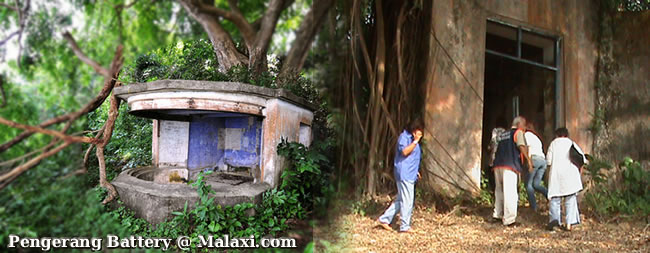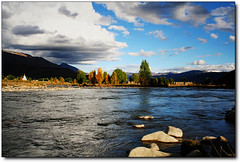
Miri is a holiday where there is not much to see, to play and to enjoy. Differ from catty Kuching and swanlike Sibu, Miri is sadly lacking in animal analogies, probably because it is too casually urban for any to spring to mind.
BUT... therefore its a good site to relax and get away from the city life!!!!
Miri is a city in northern Sarawak on the Malaysian island of Borneo and it is home to a population of about 300,000 people. Thus it is the second largest city in Sarawak. At Miri, breathtaking national parks, spectacular diving paradises, frequent festivals and international events, multiracial and multicultural festive seasons, and a lot of delicious food are the things that you can expect to have.
Miri serves as a transport hub for northern Sarawak, where interconnecting flights to the rural hinterlands of Borneo is very important and available mainly from Miri. Besides that, it is also the gateway to the Gunung Mulu National Park which is a World Heritage Site, the Kelabit Highlands of the interior of Sarawak and the Niah Cave which contains one of the oldest human remains in South East Asia.
As the place of birth of Sarawak’s and Malaysia’s petroleum industry, Miri remains the major industry of the city. Malaysia’s first oil well was dug here in 1910, and is currently a state monument and one of Miri’s tourist attractions, namely The Grand Old Lady. It is the Miri Oil Well No.1 situated at Canadian Hill. According to the old folks, there was one Canadian who lived there and his main business was to recruit foreign and local workers to work in the oil fields around this mountain, hence it was called Canadian Hill. The Petroleum Museum, next to the Grand Old Lady, exhibits photographs and information on the petroleum industry. The Grand Old Lady is about 30 meters high. Situated on top of Canada Hill overlooking Miri, it attracts even locals to enjoy the scenery or jog on the well-designed path.
Miri has a cosmopolitan atmosphere. It hosts many expatriates from all over the world. There are many ethnic groups of people live in Miri, which consists of Chinese, Malay, Iban, Bidayuh, Melanau, Kelabit, Lun Bawang and others. Almost all the locals are able to speak English or Mandarin but the main language is the Sarawakian language, which is similar to Malay but with local slangs.
My to do List
- Visit the Grand Old Lady

- Have a walk at the Miri City Fan

- Go to the Esplanade Beach (refer to the top picture)
- Visit the San Ching Tian Temple (Largest Taoist temple in South East Asia)
Call to make Miri safe for tourists
Criminals often target visitors from Brunei, affecting Sarawak's reputation as a tourist destination.
-NST Tue, May 12, 2009New Straits Times
KUCHING, MALAYSIA - Sarawak's Yang Dipertua Negeri Tun Abang Muhammad Salahuddin Abang Barieng has called for quick action to stop criminals in Miri from targeting visitors from Brunei. "The theft of tourists' cars from a neighbouring state is worrying," he said when he opened the first sitting of the state assembly yesterday.
"If this crime is not checked, it will affect the image of Sarawak as a prime tourist destination."
Abang Muhammad called on police to beef up security in places visited frequently by tourists.
State Tourism Minister Datuk Michael Mayin said in response that the situation in Miri, which had 1.5 million visitors from Brunei last year, had improved greatly.
"The police in Miri only told me last Friday that there was not even one theft of Brunei-registered cars in the last few months," he said outside the assembly.
"Crimes committed against Brunei citizens had also declined. Security has improved tremendously and I am going to Brunei after the sitting of this assembly to give our guarantee that the security in Miri is doing well.
"It may be the case a year or two ago but but not any more," Mayin said.
He blamed envious Brunei businessmen, who see their countrymen heading to Miri every weekend to do their shopping, for continuing to fan stories that Miri was dangerous to visit.
Stories of Miri being unsafe had impacted tourist arrivals from Brunei. Miri recorded a drop of about 10 per cent in arrivals last year compared with 2007.
Manyin said security fears were not the main reason why Bruneians had stayed away from Miri.
He said they were also going to Kota Kinabalu to do their shopping at Borneo's largest shopping complex, 1Borneo.
"Curiosity played a part too. But I'm sure they'll be back.
"It's a six-hour drive to Kota Kinabalu and only one hour to Miri."
____________________________________________________________________
 Entrance to Hutan Bandar
Entrance to Hutan Bandar  Parking Space
Parking Space  Visitor Entrance
Visitor Entrance  Fountain at the Visitor Entrance
Fountain at the Visitor Entrance  Resting Area at Hutan Bandar
Resting Area at Hutan Bandar  Game of basketball at Hutan Bandar
Game of basketball at Hutan Bandar  Playground at Hutan Bandar
Playground at Hutan Bandar  Couple having a relaxing moment at Hutan Bandar
Couple having a relaxing moment at Hutan Bandar Having a wedding photo shoot at Hutan Bandar
Having a wedding photo shoot at Hutan Bandar  Back to the visitor resting area at Hutan Bandar Map :http://www.dromoz.com/image/sketch/sk44c320592ec48852311700.gif (near Johor Specialist Hospital)
Back to the visitor resting area at Hutan Bandar Map :http://www.dromoz.com/image/sketch/sk44c320592ec48852311700.gif (near Johor Specialist Hospital)
 Pengerang battery
Pengerang battery 


 - Have a walk at the Miri City Fan
- Have a walk at the Miri City Fan - Go to the Esplanade Beach (refer to the top picture)
- Go to the Esplanade Beach (refer to the top picture) Tour Package :
Tour Package : 

